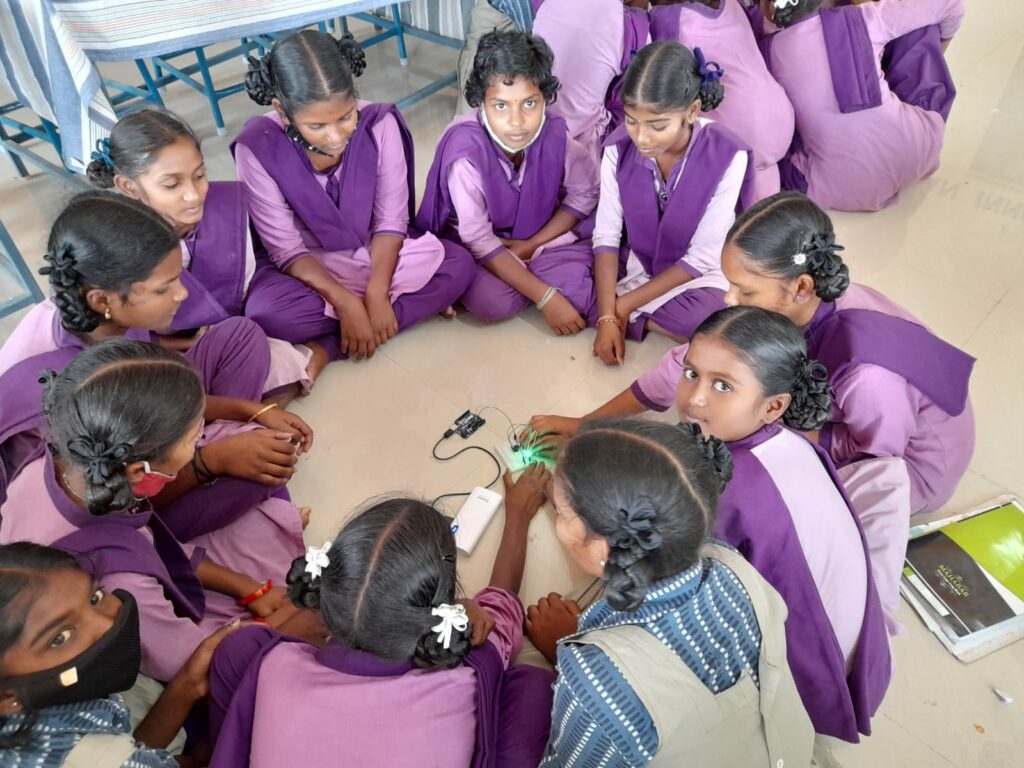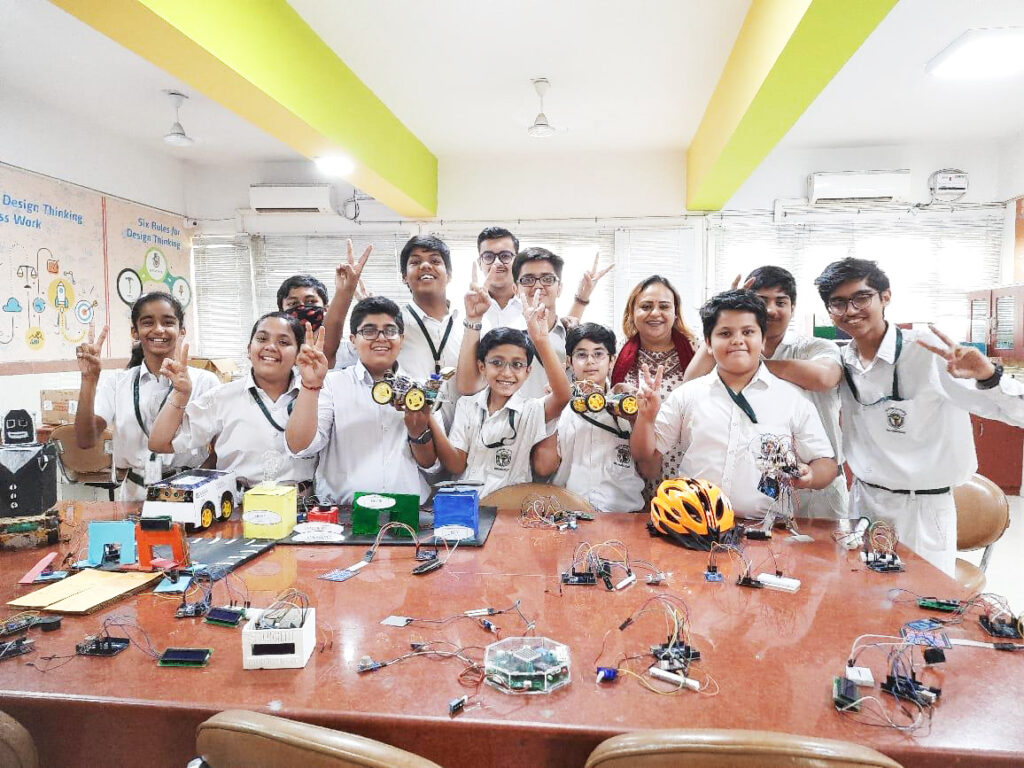Robotics Lab in Schools: Importance of Robotics Education for K-12 Students
In today’s changing world of technology, it is crucial to provide our students with the skills. Introducing robotics education, in K-12 schools is a step towards achieving this objective. It goes beyond textbooks by immersing students in a hands-on learning experience that combines principles from science, technology, engineering, and mathematics (STEM). Through robotics students not only gain an understanding of complex concepts but also cultivate essential problem-solving abilities and a genuine passion, for innovation. As we embrace the realm of robotics education we unlock possibilities. Prepare our future leaders to thrive in an increasingly technology-driven society. Benefits of Robotics Education for Students Engagement and Interest: Robotics is inherently engaging for students. It combines technology with hands-on activities, making learning fun and interactive. This engagement can lead to increased interest in STEM (Science, Technology, Engineering, and Mathematics) subjects. Practical Application of STEM Concepts: Robotics provides a tangible way to apply theoretical concepts in math, physics, engineering, and computer science. Students can see how these subjects are relevant in real-world scenarios. Problem-Solving Skills: Building and programming robots encourages critical thinking and problem-solving. Students are faced with challenges and must develop logical and creative solutions to overcome them. Teamwork and Collaboration: Many robotics projects involve group work. This fosters teamwork, communication, and collaboration skills, which are essential in both academic and professional settings. Coding and Programming Proficiency: Robotics often involves programming, which is a highly valuable skill in today’s tech-driven world. Students learn coding languages and gain experience in algorithmic thinking. Creativity and Innovation: Designing and building robots allows for creativity and innovation. Students have the opportunity to experiment, prototype, and come up with unique solutions. Real-World Problem Solving: Many robotics projects are designed to address real-world problems. This encourages students to think about how technology can be used to tackle issues like environmental sustainability, healthcare, and more. Fun and Exciting Learning Experience: Ultimately, robotics is a lot of fun! It captures students’ imagination and makes learning an enjoyable experience. Elevating Education: The Benefits of a Structured Robotics Curriculum and Lab in Schools Introducing a structured robotics curriculum and lab in schools brings a multitude of advantages that directly impact students’ learning journey. It’s like turning education into an exciting adventure! With robotics, students get hands-on experience in tackling real-world problems. They learn by doing, which not only makes learning enjoyable but also helps them develop critical thinking and problem-solving skills. Moreover, robotics encourages teamwork and collaboration. Students work together to build and program robots, fostering important social skills. This cooperative spirit extends beyond the lab and into their daily lives. As the world embraces technology, exposing students to robotics early on equips them with essential skills for the future. They become confident and proficient in STEM-related subjects, opening doors to a wide range of career opportunities. Overall, a structured robotics curriculum sparks curiosity, builds confidence, and prepares students for a world where technology plays an ever-increasing role. It’s an investment in their future success and an exciting way to elevate their educational experience! Scope of Robotics in 21st Century In the 21st century, the scope of robotics is nothing short of astounding. It’s not just about futuristic gadgets; it’s about transforming industries and shaping the way we live. Robotics is now an integral part of fields like healthcare, manufacturing, and even everyday services. For parents, this means understanding the immense potential for their children’s future careers. With robotics education, students gain skills that are in high demand, ensuring they’re well-prepared for the job market of tomorrow. School teachers play a vital role in this journey. By incorporating robotics into the curriculum, they provide a hands-on learning experience that sparks curiosity and critical thinking. It’s about turning abstract concepts into tangible creations, making learning both engaging and meaningful. Principals, too, can contribute by investing in robotics labs and programs. This not only equips students with cutting-edge knowledge but also positions the school as a leader in preparing students for the technological challenges of the 21st century. Embracing the scope of robotics isn’t just about staying ahead; it’s about giving our children the tools to shape the future. How to setup Robotics Lab in schools by STEMROBO Technologies With STEMROBO’s expertise, schools can successfully set up a STEM and Robotics lab that enriches the learning experience and prepares students for 21st Century Landscape. You can hear about the success of STEMROBO robotics lab through esteemed schools around you, kids are enjoying, learning, and experiencing 21st-century skills enriched environment. Taking the initiative to incorporate robotics education in schools is a step towards preparing students for the technology driven future. STEMROBO, with its expertise, offers a plan with where our team conducts an assessment to identify the suitable space within the school premises. We provide guidance in selecting the equipment and explain our own platforms in detail ensuring they align with educational goals. Our experienced professionals work closely with educators to develop a structured curriculum that seamlessly integrates robotics into existing subjects according to NEP 2020 guidelines. Safety and maintenance are always our first priority for kids. We assist schools in establishing protocols and schedules that ensure a learning environment. Through teacher training workshops we empower educators with the knowledge and skills required to lead robotics sessions. We also send our engineers on decided schedules to school to train students and teachers. We continue to provide assistance to address any questions or challenges that may arise. The integration of robotics activities with the curriculum is seamless reinforcing concepts along the way. Additionally we foster student engagement through workshops and competitions that ignite their passion, for innovation.. Through assessment and evaluation processes we ensure that students receive valuable feedback and recognition for their accomplishments. STEMROBO provides support and seamless implementation enabling schools to embrace this educational revolution. By equipping students, with the skills and knowledge they are prepared to excel in a world driven by technology. Prestigious and renowned schools like G. D. Goenka, Ryan International,
Robotics Lab in Schools: Importance of Robotics Education for K-12 Students Read More »








